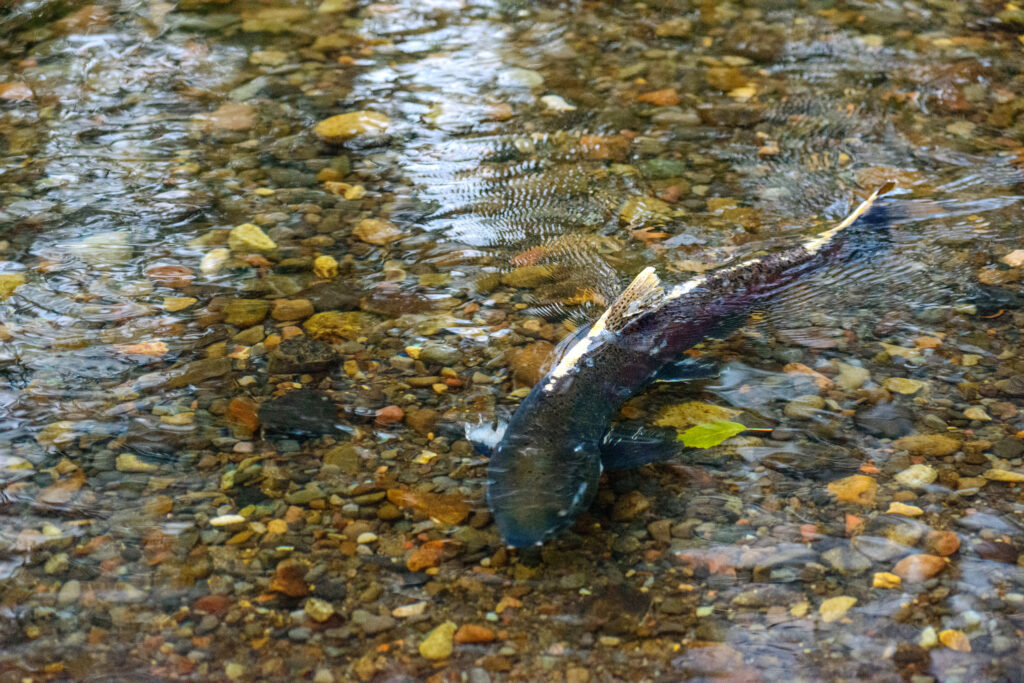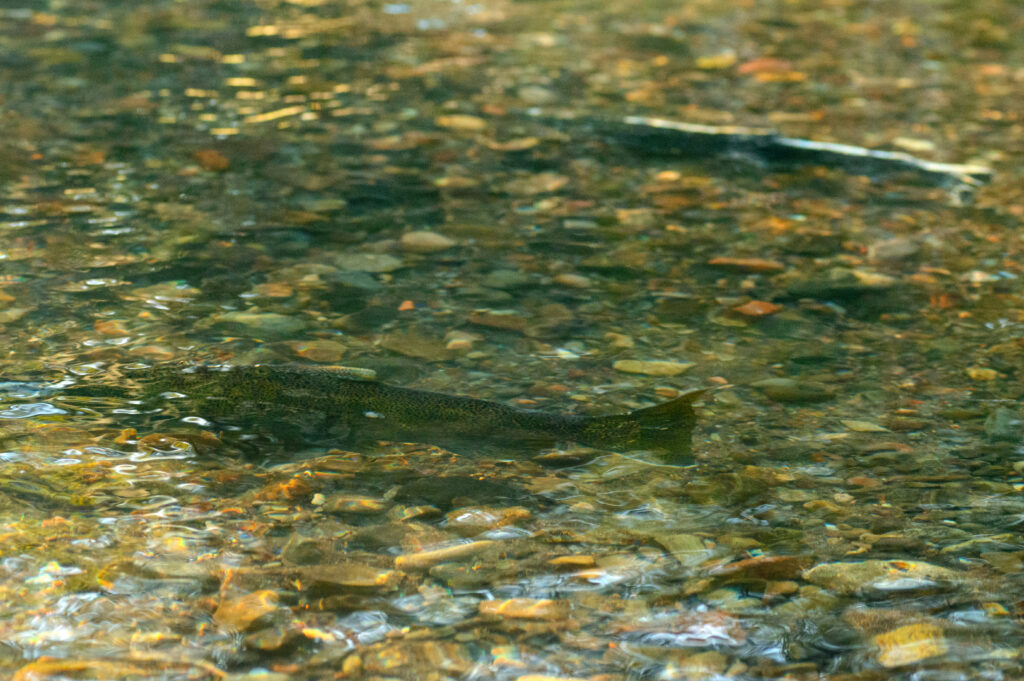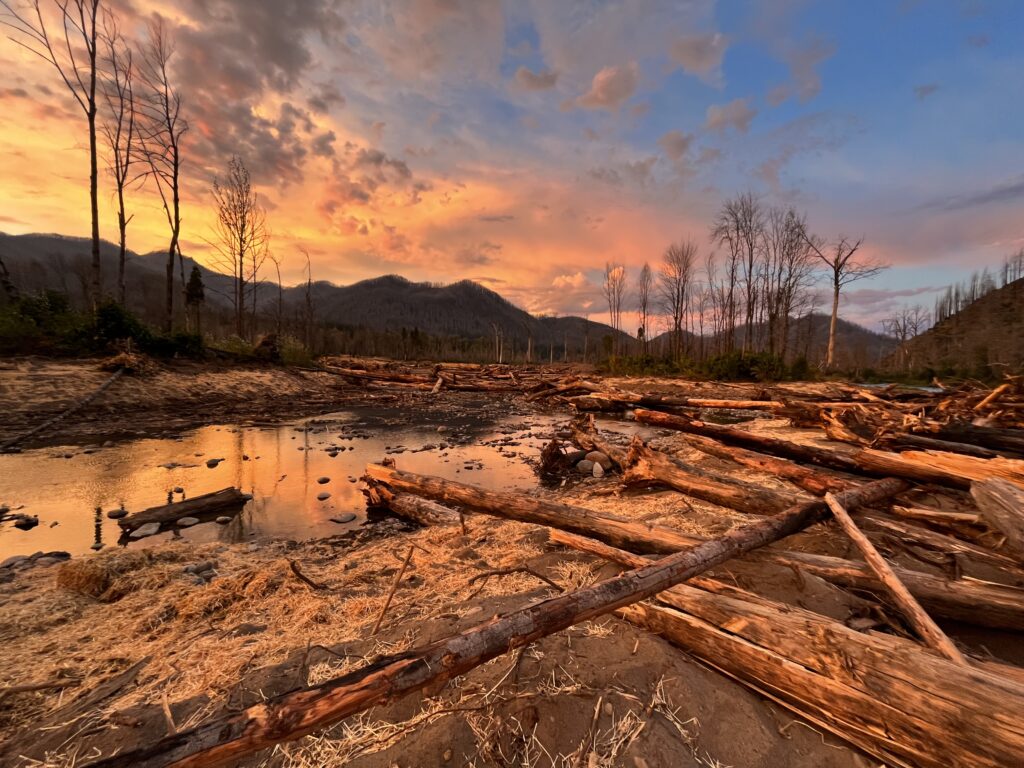
Finn Rock, Ore., – Chinook salmon making their way back up the McKenzie River have found more places to lay their eggs thanks to years of work restoring floodplains throughout the watershed.
This year, the McKenzie River Trust, U.S. Forest Service, EWEB, and the McKenzie Watershed Council finished their latest project at Finn Rock Reach, transforming forest and helping it to become part of the river again.
“The goal is to give the river as much space as we can,” Project Manager John Trimble explained.

The McKenzie River once naturally flowed through multiple channels and wetlands across the entire valley. To make way for development, roads and infrastructure, the river has been restricted in many areas to flow through a single channel. By forcing the river into a single channel, it has more energy and carves deeper into the earth’s surface and the river can become like a firehose. The firehose effect causes further erosion, transports sediments downstream, and leaves wetlands and once flooded areas high and dry. This greatly reduces the amount of spawning gravels available and habitat for young fish who need calmer water and places to hide.
In contrast, the restored floodplain at Finn Rock Reach is a messy, braided maze of logjams and water flowing at different speeds. It looks chaotic compared to an idealized esthetic of a flowing river, but by restoring the natural functions of floodplains, the watershed will become healthier, able to self-regulate with less human intervention, and will be more resilient to natural disasters and stressors of a changing climate.
“Adding large wood back into the system helps to slow water down, gives fish a place to hide, and also provides some complexity so that sediment can drop out of the system. Wood structures made from logs interact with the river to create deep pools, little sandbars, and ultimately really nice spawning habitats for Spring Chinook salmon, and other fish species,” Trimble said.

Part of a long-term vision for restoring the Middle McKenzie River, Finn Rock Reach is one of many completed and planned projects. Working collaboratively across the basin, partners have already restored more than 400 acres between Finn Rock and the headwaters of the McKenzie River.
Kate Meyer, a Fisheries Biologist for the U.S. Forest Service, has been working in the McKenzie watershed for 19 years and on the Finn Rock project since 2019.
“Adding over 400 acres of high-quality slow water habitat for juvenile fish is a significant uplift. We expect to see improved growth, survival, and abundance of salmon, trout, and lamprey in the McKenzie,” says Meyer.
Beyond benefiting fish and wildlife, restoration work offers broad community benefits.
“These large-scale restoration projects help build resiliency for downstream infrastructure,” said EWEB’s Water Resources Supervisor Susan Fricke. “These projects make it cleaner for everybody to be swimming, recreating, and fishing – doing all the things they love to do in the McKenzie – and it also decreases costs at the treatment plant for Hayden Bridge for the water we all drink.”
